Solar eclipse of November 23, 1965
| Solar eclipse of November 23, 1965 | |
|---|---|
 Map | |
| Type of eclipse | |
| Nature | Annular |
| Gamma | 0.3906 |
| Magnitude | 0.9656 |
| Maximum eclipse | |
| Duration | 242 sec (4 m 2 s) |
| Coordinates | 1°42′N 119°48′E / 1.7°N 119.8°E |
| Max. width of band | 134 km (83 mi) |
| Times (UTC) | |
| Greatest eclipse | 4:14:51 |
| References | |
| Saros | 132 (43 of 71) |
| Catalog # (SE5000) | 9433 |
An annular solar eclipse occurred on November 23, 1965. A solar eclipse occurs when the Moon passes between Earth and the Sun, thereby totally or partly obscuring the image of the Sun for a viewer on Earth. An annular solar eclipse occurs when the Moon's apparent diameter is smaller than the Sun's, blocking most of the Sun's light and causing the Sun to look like an annulus (ring). An annular eclipse appears as a partial eclipse over a region of the Earth thousands of kilometres wide.
Related eclipses
Saros 132
It is a part of Saros cycle 132, repeating every 18 years, 11 days, containing 71 events. The series started with partial solar eclipse on August 13, 1208. It contains annular eclipses from March 17, 1569 through March 12, 2146, hybrid on March 23, 2164 and April 3, 2183 and total eclipses from April 14, 2200 through June 19, 2308. The series ends at member 71 as a partial eclipse on September 25, 2470. The longest duration of annular was 6 minutes, 56 seconds on May 9, 1641, and totality will be 2 minutes, 14 seconds on June 8, 2290.[1]
| Series members 40-50 occur between 1901 and 2100: | ||
|---|---|---|
| 40 | 41 | 42 |
 October 22, 1911 |
 November 1, 1929 |
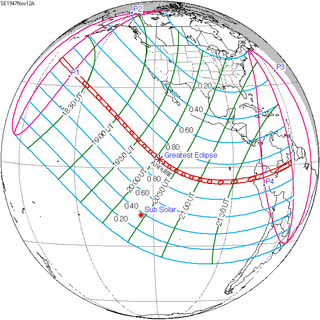 November 12, 1947 |
| 43 | 44 | 45 |
 November 23, 1965 |
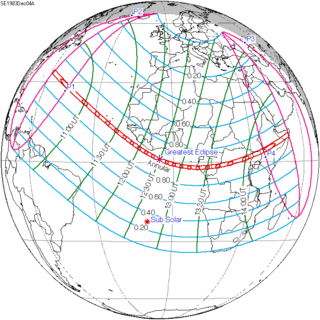 December 4, 1983 |
 December 14, 2001 |
| 46 | 47 | 48 |
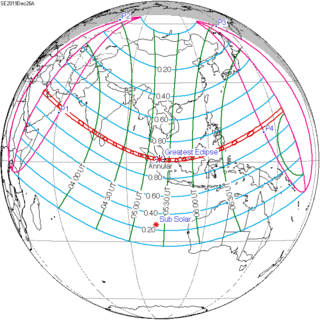 December 26, 2019 |
 January 5, 2038 |
 January 16, 2056 |
| 49 | 50 | |
 January 27, 2074 |
 February 7, 2092 | |
Metonic series
The metonic series repeats eclipses every 19 years (6939.69 days), lasting about 5 cycles. Eclipses occur in nearly the same calendar date. In addition the octon subseries repeats 1/5 of that or every 3.8 years (1387.94 days).
| 22 eclipse events between September 12, 1931 and July 1, 2011. | ||||
|---|---|---|---|---|
| September 11-12 | June 30-July 1 | April 18-19 | February 4-5 | November 22-23 |
| 114 | 116 | 118 | 120 | 122 |
 September 12, 1931 |
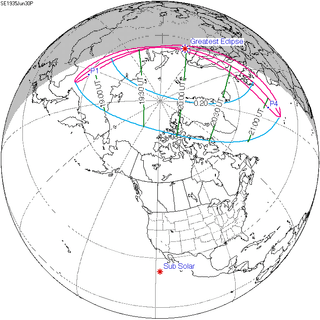 June 30, 1935 |
 April 19, 1939 |
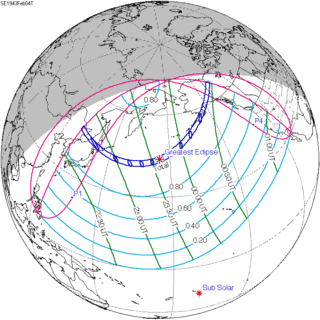 February 4, 1943 |
 November 23, 1946 |
| 124 | 126 | 128 | 130 | 132 |
 September 12, 1950 |
 June 30, 1954 |
 April 19, 1958 |
 February 5, 1962 |
 November 23, 1965 |
| 134 | 136 | 138 | 140 | 142 |
 September 11, 1969 |
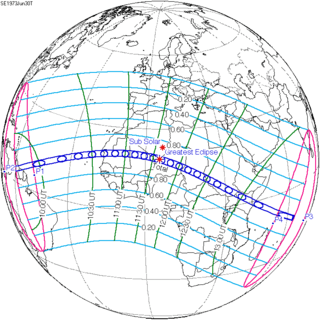 June 30, 1973 |
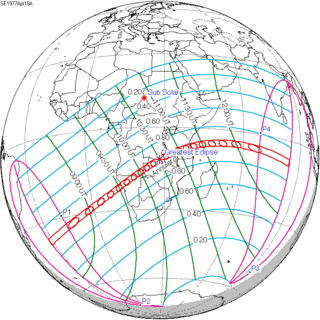 April 18, 1977 |
 February 4, 1981 |
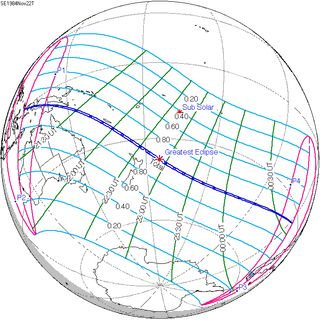 November 22, 1984 |
| 144 | 146 | 148 | 150 | 152 |
 September 11, 1988 |
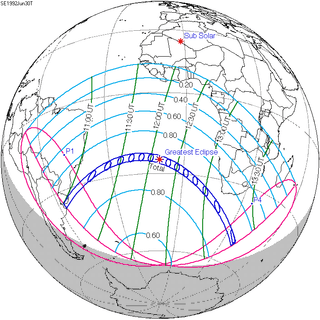 June 30, 1992 |
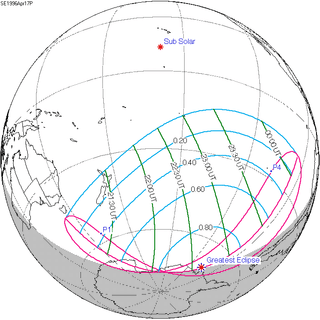 April 17, 1996 |
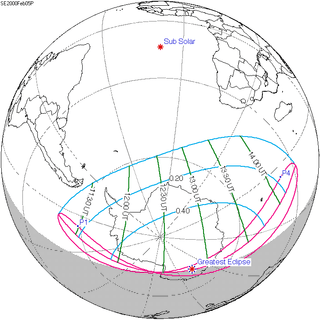 February 5, 2000 |
 November 23, 2003 |
| 154 | 156 | |||
 September 11, 2007 |
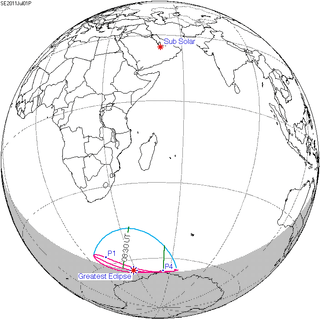 July 1, 2011 | |||
Notes
References
- Earth visibility chart and eclipse statistics Eclipse Predictions by Fred Espenak, NASA/GSFC
| Wikimedia Commons has media related to Solar eclipse of 1965 November 23. |
